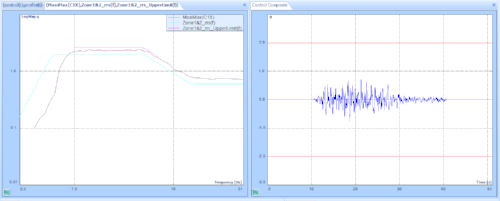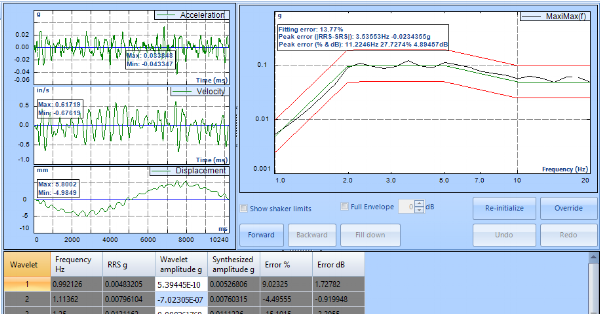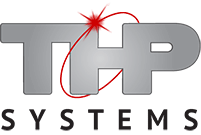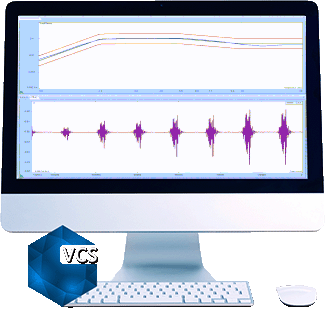Product Overview
Vibration Tests for Seismic Qualification
The earthquake testing control package provides controls to meet a target a Required Response Spectrum (RRS). Waveforms are automatically synthesized from a user specified SRS reference profile using random type of wavelets, uniform or shaped. Alarm and abort tolerances may be applied to any active channel to provide an extra degree of safety for delicate test articles.
Learn MoreKey Features
- Compliance: IEEE 344-2013
- Waveform Synthesis Methods: damped sine, sine beat, uniform random, or shaped random
- Component Generation: auto or manually controlled
- Random Wavelet Definition: frequency, amplitude
- Shaped Random Time Window: user defined rising time, hold time and decay time
- Component Generation: auto or manually controlled
- Synthesis Parameters: waveform duration, max % of error, max number of iterations
- Full Envelope: configure test response spectrum to be greater than RRS in terms of dB
To simulate equipment in a structure subject to earthquakes, vibration tests for seismic qualification utilizes different types of motion to effectively simulate the postulated seismic environment. Single frequency and multiple frequency are the two categories of motion that these types of motion fall into. Each category includes multiple waveform types for different cases.
Single-frequency testing simulates the floor motion vibrating at the predominant frequency. It includes the following waveforms of motion, which can all be simulated by EDM VCS.
- Continuous sine test: dwell sine control
- Continuous sine test: dwell sine control
- Sine-beat test: TTH (transient time history) control
- Decaying-sine test: TTH control
- Sine-sweep test: swept sine control
Seismic ground motion is broadband vibration. When it is not filtered by a building or the ground, the resulting floor motion that affects equipment tends to maintain broadband characteristics. Multi-frequency testing uses complex waveforms to simulate broadband floor motion to test equipment under such conditions.
In EDM software, the following waveforms are available to use as test motions to simulate a particular seismic excitation at the mounting of equipment. Some test types will be better than others for simulating a specific type of equipment excitation.
Time history test: TTH control, TWR (time waveform replication) control

Random motion test: Earthquake testing control

Complex motion tests:
- Combination of multiple sinusoids: SRS (Shock Response Spectrum) control, Earthquake testing control
- Combination of multiple sine beats: SRS control, Earthquake testing control
- Combination of decaying sinusoids: SRS control, Earthquake testing control
- Vibration Visualization: The EDM Vibration Visualization feature is available in EDM VCS software all test types, including MIMO VCS. This option provides fast and efficient structural model generation and full 3D visualization of the online vibration pattern on the structure under test.
- Multiple instances of EDM VCS can run simultaneously on the same computer. Each instance connects a Spider system to run the vibration controller software. All instances must run different tests. This feature provides a central place to control multiple Spider systems and perform vibration tests separately.
- Black Box Mode: Operating Without a PC
A supported front-end can operate in Black Box mode which allows it to perform a test without a connected PC. In this mode, a PC is used only to configure the system before the test and then to download the data after the test is complete. - Multi-shaker control (MSC) is a unique feature offered enables users to view and monitor multiple shaker tests from one PC station. Up to 12 controllers can be accessed simultaneously.
-
Continuous Data Recording
During vibration control, all measurement input and drive signals can continuously record to a Spider-NAS or the internal storage residing in each front-end. Users can view and analyze data files with Crystal Instruments Post Analyzer. The variable sampling rate can be enabled to simultaneously record slow-change signals together with high speed vibration data.
Available Options
For further information on options available for this Product, please contact our specialist sales team on:
+44 (0) 1462 481859 or
Resources
Request Quote
Please select the form below relevant to your enquiry:
Hardware
A Spider system can consist of one or more Spider hardware front-ends. The user constructs the system by combining Spider front-ends detected on the same LAN. The software validates and displays hardware attributes of each Spider front-end. The following hardware is supported by EDM VCS software for vibration control, monitoring, and data acquisition.
- Spider-81 Premium Vibration Controller
- Spider-81B Basic Vibration Controller
- Spider-80X High Channel Vibration Controller – Scale up to 512 Channels
- Spider-80Xi High Channel Vibration Controller – Compact, handheld high channel system
- Spider-80M MIMO Vibration Control System
- Spider-80SG General Data Acquisition Device with Strain Measurement
Software
- Classic Shock Control for Vibration Testing
- Transient Time History Control (TTH) for Vibration Testing
- Transient Random Control for Vibration Testing
- Shock Response Spectrum Synthesis & Control
Monitoring Through EDM Cloud
All tests in EDM-VCS support status checks through EDM Cloud. With EDM Cloud support, users can set up any VCS test to upload live data or run logs for completed tests to a cloud storage space provided by Crystal Instruments, where data is securely stored in the user’s account.
The EDM Cloud website is located at https://cloud.go-ci.com. Users can access EDM Cloud from anywhere in the world to check the status of past and current tests. A secure login flow ensures the status can only be checked by authorized personnel with proper credentials. Multiple logins for accessing the same Cloud account is available.



 VCS Brochure
VCS Brochure